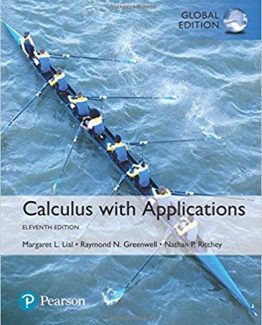How to Read and Do Proofs: An Introduction to Mathematical Thought Processes 6th Edition, ISBN-13: 978-1118164020
[PDF eBook eTextbook]
- Publisher: Wiley; 6th edition (July 29, 2013)
- Language: English
- 336 pages
- ISBN-10: 9781118164020
- ISBN-13: 978-1118164020
This text makes a great supplement and provides a systematic approach for teaching undergraduate and graduate students how to read, understand, think about, and do proofs. The approach is to categorize, identify, and explain (at the student’s level) the various techniques that are used repeatedly in all proofs, regardless of the subject in which the proofs arise. How to Read and Do Proofs also explains when each technique is likely to be used, based on certain key words that appear in the problem under consideration. Doing so enables students to choose a technique consciously, based on the form of the problem.
This straightforward guide describes the main methods used to prove mathematical theorems. Shows how and when to use each technique such as the contrapositive, induction and proof by contradiction. Each method is illustrated by step-by-step examples. The Second Edition features new chapters on nested quantifiers and proof by cases, and the number of exercises has been doubled with answers to odd-numbered exercises provided. This text will be useful as a supplement in mathematics and logic courses. Prerequisite is high-school algebra.
Table of Contents:
Foreword xi
Preface to the Student xiii
Preface to the Instructor xv
Acknowledgments xviii
Part I Proofs
1 Chapter 1: The Truth of It All 1
2 The Forward-Backward Method 9
3 On Definitions and Mathematical Terminology 25
4 Quantifiers I: The Construction Method 41
5 Quantifiers II: The Choose Method 53
6 Quantifiers III: Specialization 69
7 Quantifiers IV: Nested Quantifiers 81
8 Nots of Nots Lead to Knots 93
9 The Contradiction Method 101
10 The Contrapositive Method 115
11 The Uniqueness Methods 125
12 Induction 133
13 The Either/Or Methods 145
14 The Max/Min Methods 155
15 Summary 163
Part II Other Mathematical Thinking Processes
16 Generalization 179
17 Creating Mathematical Definitions 197
18 Axiomatic Systems 219
Appendix A Examples of Proofs from Discrete Mathematics 237
Appendix B Examples of Proofs from Linear Algebra 251
Appendix C Examples of Proofs from Modern Algebra 269
Appendix D Examples of Proofs from Real Analysis 287
Solutions to Selected Exercises 305
Glossary 357
References 367
Index 369
Review:
“The instructional material is to the point, with well-considered examples and asides on common mistakes. Good examples of the author’s thoughtfulness appear in the discourses on pp. 5-6 of identifying the hypothesis and conclusion when they are not obvious, on pp. 28-29 regarding overlapping notation, and on pp. 190-191 of the advantages and disadvantages of generalization.” (Zentralblatt MATH 2016)
Daniel Solow is a professor of management for the Weatherhead School of Management at Case Western Reserve University. His research interests include developing and analyzing optimization models for studying complex adaptive systems, and basic research in deterministic optimization, including combinatorial optimization, linear and nonlinear programming. He has published over 20 papers on both topics.
What makes us different?
• Instant Download
• Always Competitive Pricing
• 100% Privacy
• FREE Sample Available
• 24-7 LIVE Customer Support






Reviews
There are no reviews yet.